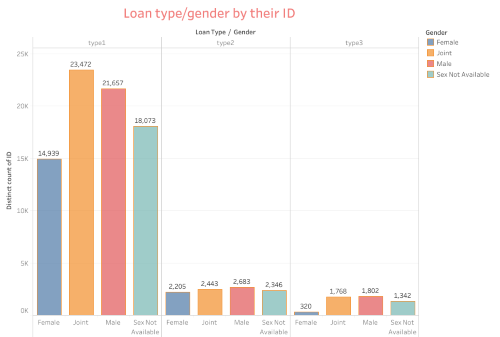Unlocking opportunities: What is the difference between college and university education

The primary difference between college and university lies in their scope, with colleges typically focusing on undergraduate education within specific fields, while universities offer a broader range of academic programs, including undergraduate, graduate, and professional studies.
At its core, the difference between college and university lies in their scope and structure. While college typically emphasizes undergraduate education within a specific field or set of disciplines, university encompasses a broader spectrum of academic offerings, including undergraduate, graduate, and professional programs.
The distinction isn’t merely academic; it permeates every facet of the educational experience, from faculty roles and research opportunities to campus culture and resources. So, if you’re intrigued by the intricacies of higher education, join us as we navigate the labyrinth of differences between college and university. Prepare to be enlightened, inspired, and perhaps even surprised by what lies beneath the surface.
When considering higher education, individuals often encounter the terms “college” and “university” interchangeably. However, these institutions possess distinct characteristics that impact the academic experience and future opportunities of students. Understanding the disparities between colleges and universities is crucial for making informed decisions about one’s educational journey.
Defining Terms: Outlining the difference between college and university
Before delving into the disparities, it’s essential to establish clear definitions for “college” and “university.” While the terms are frequently used interchangeably, they represent distinct types of educational institutions. A college typically refers to a smaller, undergraduate-focused institution, whereas a university encompasses a broader range of academic programs, including undergraduate, graduate, and professional studies.
Origins of Colleges
Colleges have deep historical roots, dating back to ancient civilizations such as Greece and Rome, where centers of learning were established to educate the elite. Throughout history, colleges evolved into institutions dedicated to providing accessible education to broader segments of society.
Evolution into Universities
The concept of universities emerged from the medieval European tradition of cathedral schools and monastic academies. Over time, these institutions expanded their curricula, offering advanced studies in various fields beyond theology and philosophy.
Global Perspectives
Across different countries and cultures, the distinction between colleges and universities varies. In some regions, the terms are used interchangeably, while in others, they denote specific types of educational institutions with unique characteristics and purposes.
Institutional Structure
College Structure
Colleges typically consist of several academic departments, each focusing on a particular discipline or field of study. Students enroll in programs within these departments to pursue undergraduate degrees.
University Structure
Universities comprise multiple colleges or schools, each housing various academic departments. This structure allows universities to offer a diverse array of undergraduate, graduate, and professional programs to cater to a broader range of academic interests and career goals.
Academic Offerings
College Programs
Colleges often emphasize a liberal arts education, providing students with a broad-based curriculum that fosters critical thinking, communication skills, and intellectual exploration. Additionally, colleges may offer vocational and technical tracks tailored to specific career paths.
University Programs
Universities boast a wide-ranging portfolio of academic disciplines, encompassing liberal arts, sciences, engineering, business, health sciences, and more. This expansive array of programs provides students with opportunities for interdisciplinary study and specialization.
Faculty and Research
College Faculty Roles
In colleges, faculty members typically prioritize teaching and student mentorship, fostering close relationships with students and providing personalized academic support.
University Faculty Roles
University faculty members often balance teaching with research and scholarly pursuits, contributing to the advancement of knowledge in their respective fields through publications, grants, and collaborations.
Student Experience
College Life
College campuses often cultivate close-knit communities, where students form meaningful connections with peers, faculty, and staff. The intimate environment fosters a sense of belonging and encourages collaboration and mutual support among students.
University Life
University campuses celebrate diversity and inclusivity, welcoming students from various backgrounds, cultures, and experiences. Extracurricular opportunities abound, ranging from clubs and organizations to research projects and internships, enriching the overall student experience.
Size and Scale
College Size
College campuses tend to be smaller in size, fostering a sense of intimacy and camaraderie among students. With fewer enrollees, colleges offer a more personalized learning environment and greater access to faculty and resources.
University Size
Universities often feature larger campuses with diverse student populations, creating a vibrant and dynamic community. Despite the size, universities strive to maintain a sense of inclusivity and provide support services to ensure every student thrives academically and socially.
Resources and Facilities
College Resources
While colleges may have limited facilities compared to universities, they prioritize providing accessible resources such as libraries, laboratories, and academic support services to enhance student learning and success.
University Resources
Universities boast state-of-the-art facilities, including research labs, libraries, athletic centers, and cultural amenities, designed to support a wide range of academic and extracurricular pursuits. These resources contribute to a rich and immersive learning environment for students.
Admission Requirements
College Admission
College admission typically involves a holistic review process, considering factors such as standardized test scores, academic performance, extracurricular activities, and personal essays.
University Admission
University admission tends to be more competitive, with stringent standards for academic achievement and extracurricular involvement. Universities may also consider factors such as diversity, leadership potential, and contributions to the community in their selection process.
Cost and Affordability
College Tuition
Colleges often offer affordability options such as scholarships, grants, and need-based aid to make education accessible to students from diverse socioeconomic backgrounds.
University Tuition
University tuition tends to be higher than college tuition, reflecting the broader range of academic programs, resources, and facilities available to students. However, universities also offer scholarship opportunities and financial aid packages to mitigate costs for deserving students.
Conclusion
In summary, colleges and universities differ in their institutional structures, academic offerings, faculty roles, student experiences, size and scale, resources and facilities, admission requirements, and cost and affordability.
When deciding on an institution, prospective students need to consider their academic interests, career goals, learning preferences, and financial circumstances. By understanding the difference between college and university, individuals can make informed choices that align with their aspirations and values.
Regardless of whether one chooses a college or university, both institutions offer valuable opportunities for personal growth, intellectual development, and professional advancement. By embracing the educational journey and taking advantage of the resources and experiences available, students can maximize their potential and shape a brighter future.









